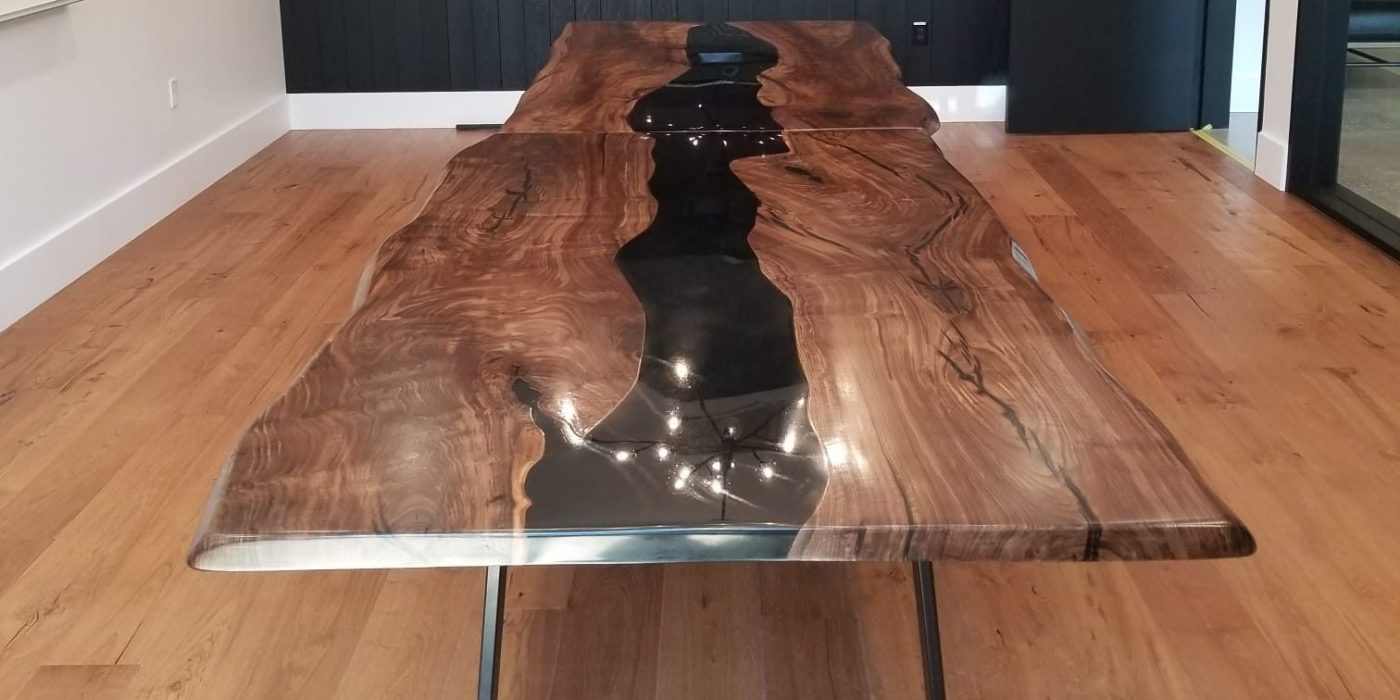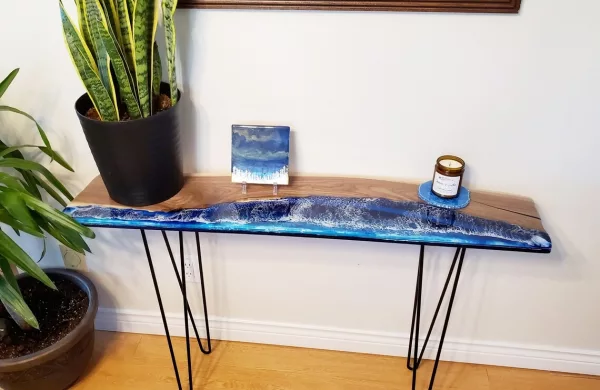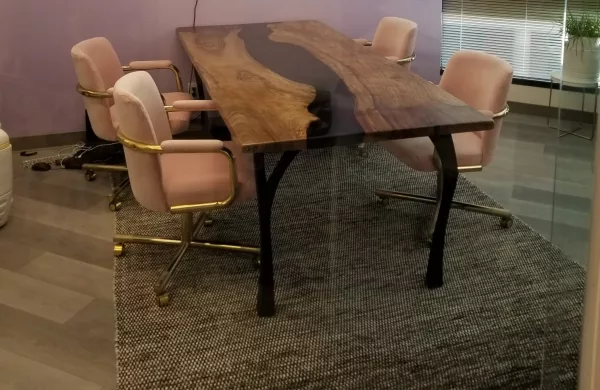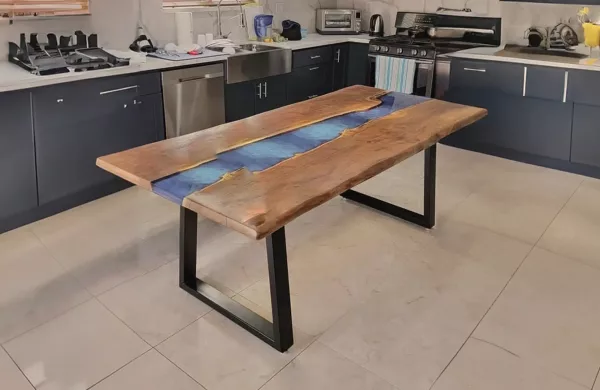
When creating dining tables, especially those with artistic designs, live edges, or incorporating materials such as wood and metal, you’ll often hear about epoxy and resin being used for finishing or for creating a tabletop itself. Here’s how they differ in this particular application:
Epoxy Resin:
In the context of dining tables, “epoxy” usually refers to epoxy resin systems, which are a two-part mixture of an epoxy resin and a hardener.
Pros:
- Durability: Epoxy resin forms a very hard and durable surface once cured, which is resistant to heat, water, and many chemicals, making it ideal for a dining table that will be used frequently.
- Finish: It provides a clear, glossy finish that can enhance the appearance of the wood grain or any embedded objects, like shells or stones.
- Sealing Properties: Epoxy is excellent for sealing wood and preventing it from warping or cracking over time due to moisture.
- Adhesion: It has strong adhesive properties, making it great for bonding different materials together, like a wood slab with a metallic frame.
Cons:
- Cost: Epoxy resin is generally more expensive than other types of resin.
- Curing Time: It can take longer to cure fully, sometimes up to several days for complete hardness.
- Sensitivity: The mixing ratio of resin to hardener must be precise, and the curing process can be sensitive to temperature and humidity.
- Toxicity: While epoxy has low volatility, it can still be toxic if inhaled or if it comes into contact with skin during the mixing and curing process, requiring good ventilation and protective gear.
Other Resins (Like Polyester or Polyurethane Resin):
These resins can also be used for tables but are less common for high-quality dining surfaces.
Pros:
- Cost: Other resins, like polyester, are generally less expensive than epoxy.
- Curing Time: Some may cure faster than epoxy resins.
- Versatility: There are various types of resins available that can offer different finishes and textures, depending on the product.
Cons:
- Durability: They may not be as durable as epoxy and can be more prone to scratches and heat damage.
- Finish: The finish can sometimes be less clear than epoxy, and polyester resin, for example, is more prone to yellowing over time due to UV exposure.
- Toxicity: Polyester resin has a strong odor and releases more volatile organic compounds (VOCs) than epoxy, requiring good ventilation during use.
Application for Dining Tables:
Epoxy Resin Tables:
- River Tables: Epoxy is particularly popular for creating “river tables,” where the resin is used to mimic a river between two live edges of wood.
- Clear Coats: It can be used to coat the entire tabletop for a glossy, protective finish.
- Repairs: Epoxy can fill in cracks, knots, or imperfections in wood, providing a smooth surface.
Other Resin Tables:
- Might be chosen for cost-saving reasons or for specific design properties that a particular type of resin might offer.
Environmental Considerations:
- Epoxy resin is generally considered more stable and environmentally friendly once cured, as other resins might continue to leach chemicals over time.
In summary, for dining tables that are meant to last and withstand everyday use, epoxy resin is typically the preferred choice due to its superior strength, durability, and finish. However, the specific choice may vary based on the desired aesthetics, budget, and the particular characteristics of the wood and design.







